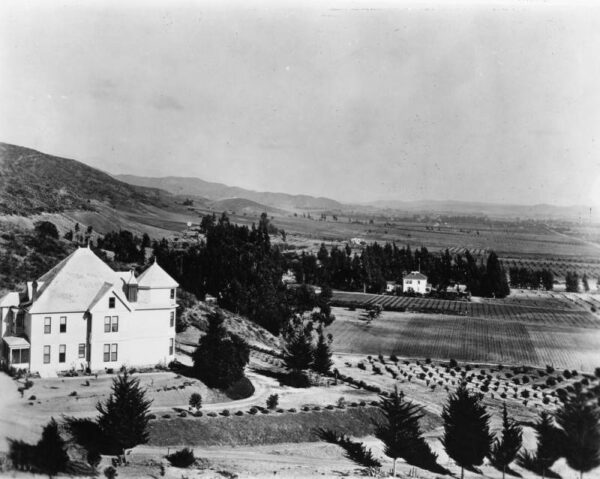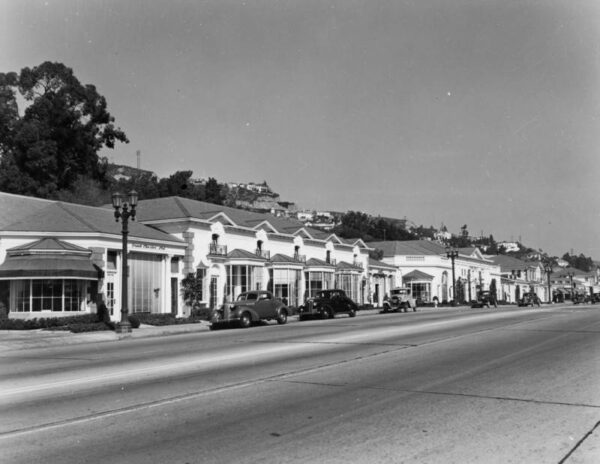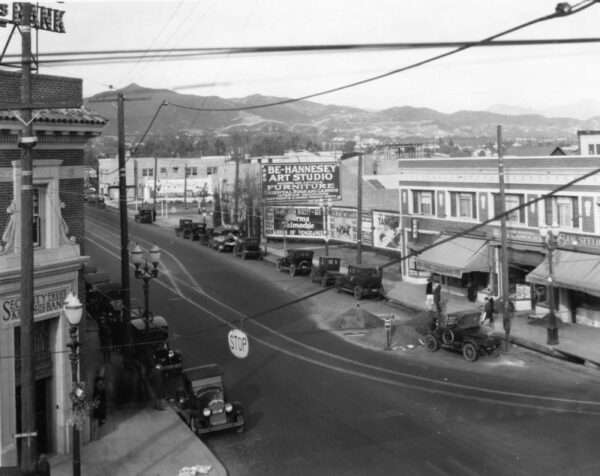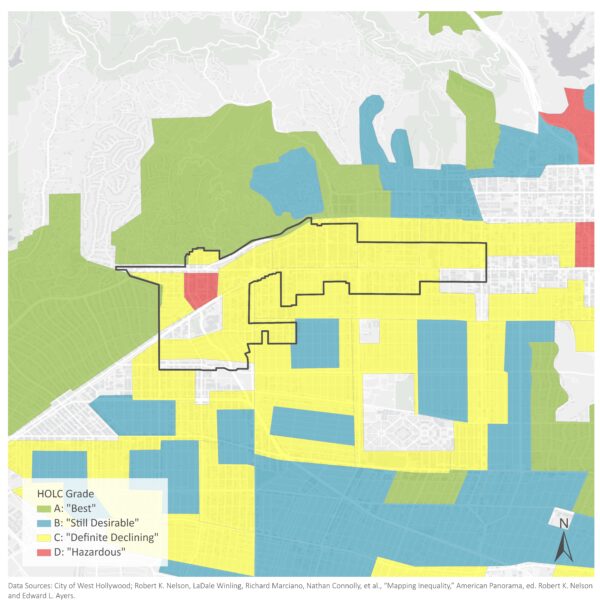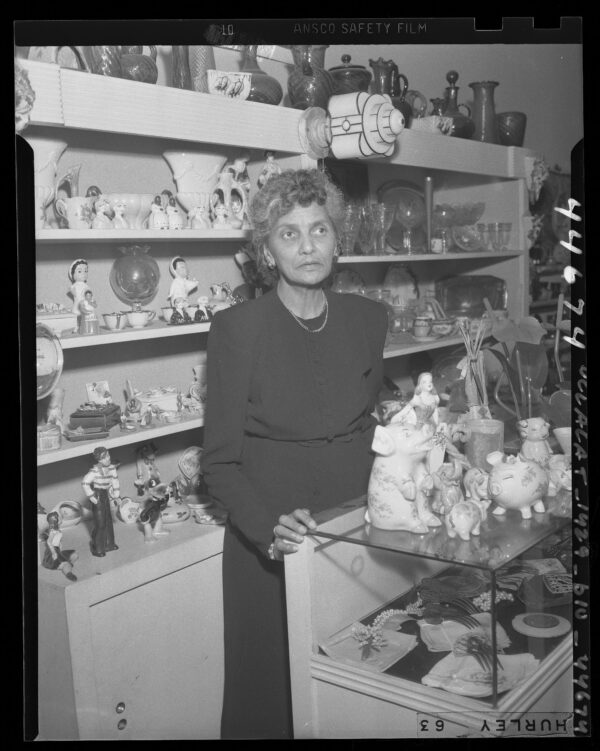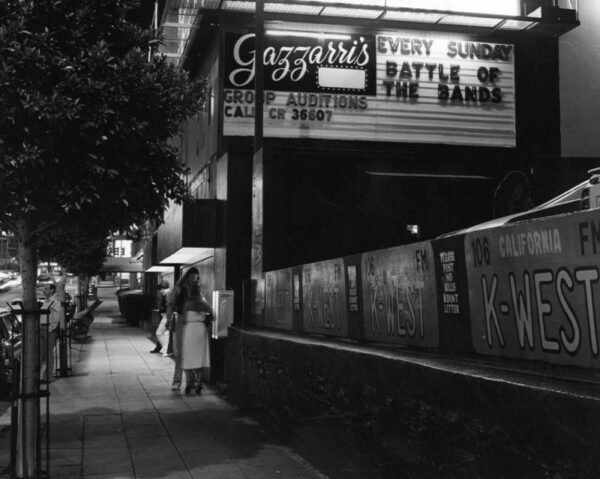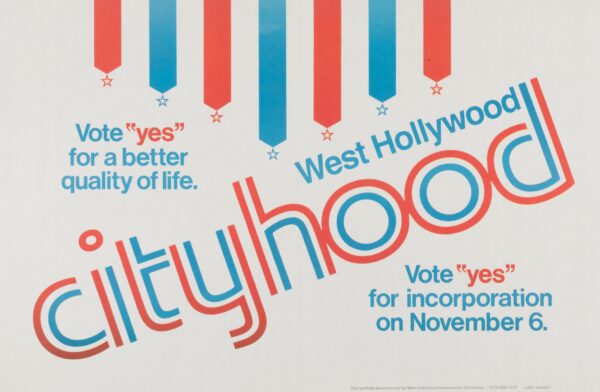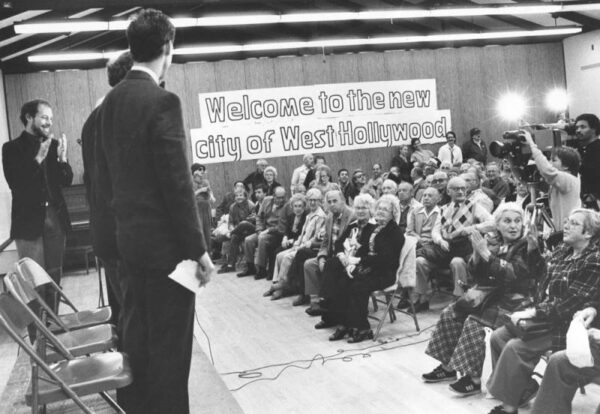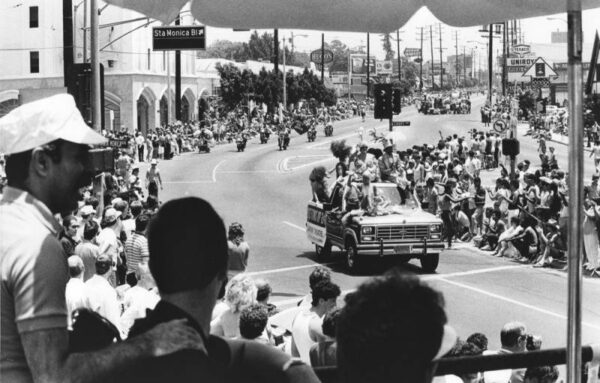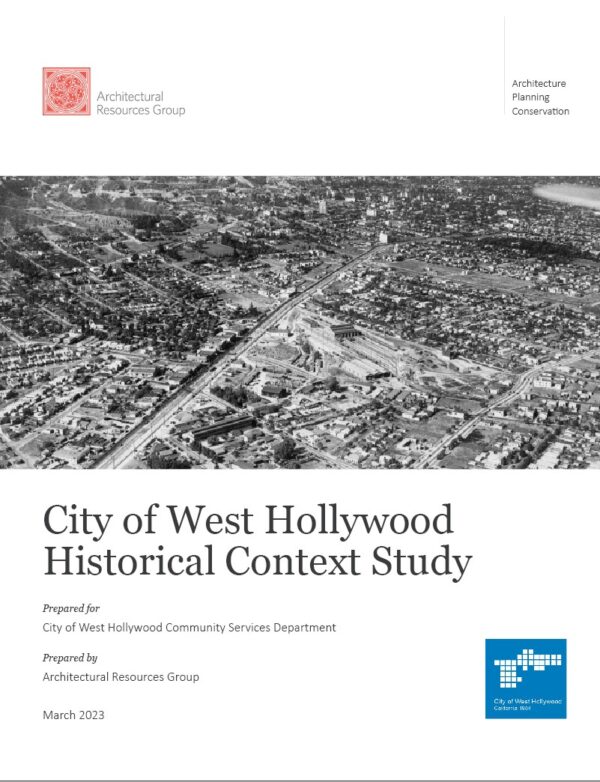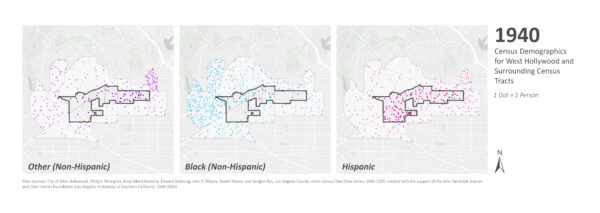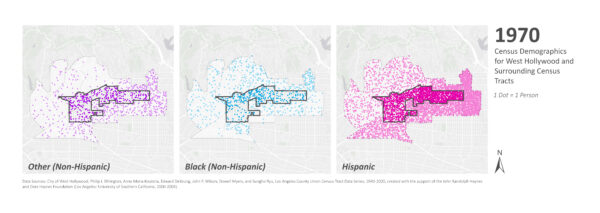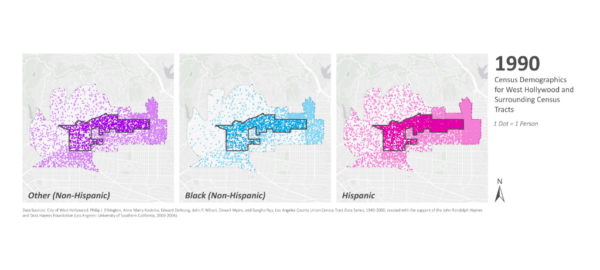City of West Hollywood Historical Context Study
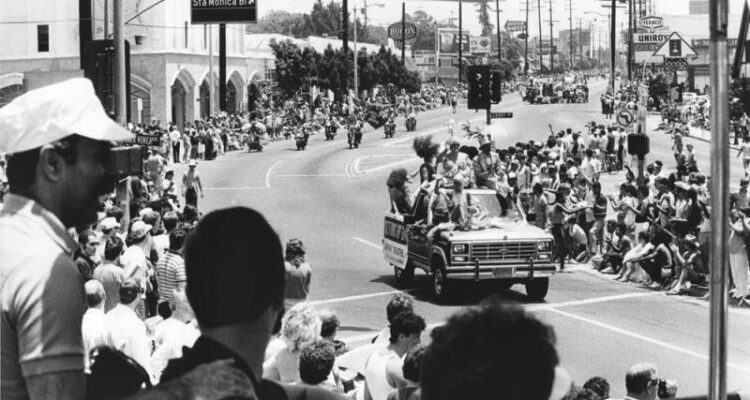
PROJECT
City of West Hollywood Historical Context Study
This document represents a city's resolve to understand its history and patterns of discrimination as it strives to become an equitable place to live, work and play.
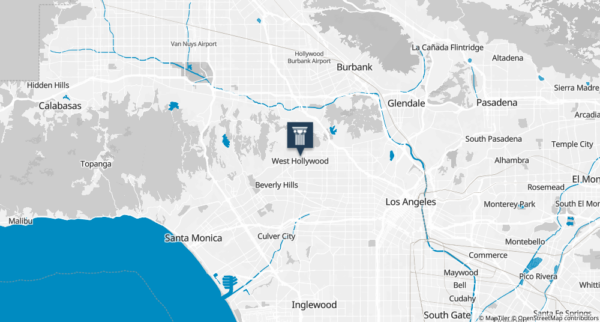
In December 2021, the City of West Hollywood asked City staff to prepare a Historical Context Study: an analysis of historical patterns involving discriminatory housing and land use policy practices. This project, a first-of-its-kind for the City of West Hollywood, studied patterns (including periods before the City’s 1984 incorporation) that reinforced racial and class biases affecting people of color and members of the LGBTQ+ community.
One vital component of this project was a public outreach program in which information was solicited from members of the West Hollywood community regarding their own experiences with discrimination living, working, or playing in the City. Outreach included a series of community listening sessions and a page on the City’s website, which included a form that community members could use to provide input and information anonymously. The purpose of community engagement was to get public input to tailor the Historical Context Study to West Hollywood to include its community’s direct experiences.
The Architectural Resources Group presented the findings of the completed Study to the West Hollywood City Council and the Social Justice Advisory Board, which will use the Study to inform their future work. The completed Study traces the history of racism and discrimination from the 19th to the present. It provides a historical overview of West Hollywood to familiarize readers with the area’s history, with an emphasis on the history of the BIPOC and LGTBQ+ communities there.
The aim was to produce a study that would help West Hollywood move into the future with a better and deeper understanding of the discrimination its residents faced, creating a more equitable city for them to live in. It illustrates how cities are proceeding with inclusion and reparations efforts and how those efforts can be tied to place. While not specifically place-based in the way a traditional Historic Context Statement is, the Study documents how racism and discrimination affected West Hollywood as it developed in the 20th century, which is intrinsically tied to the built environment. It illustrates how history affects the present and can inform the future. It shows how such a study can explore these difficult topics while not focusing solely on underrepresented communities as victims but also examining how they pushed for their rights and what has been done to rectify these wrongs.
The Historical Context Study can inspire future efforts in the City of West Hollywood and in other cities as they contemplate similar projects. In 2024, the Conservancy awarded this project a Preservation Award.
The Historical Context Study can be viewed here.
Historic Preservation Consultant: Architectural Resources Group
West Hollywood Community Development Department Staff: Yvonne Quarker, Jasmine Duckworth, Andi Lovano
